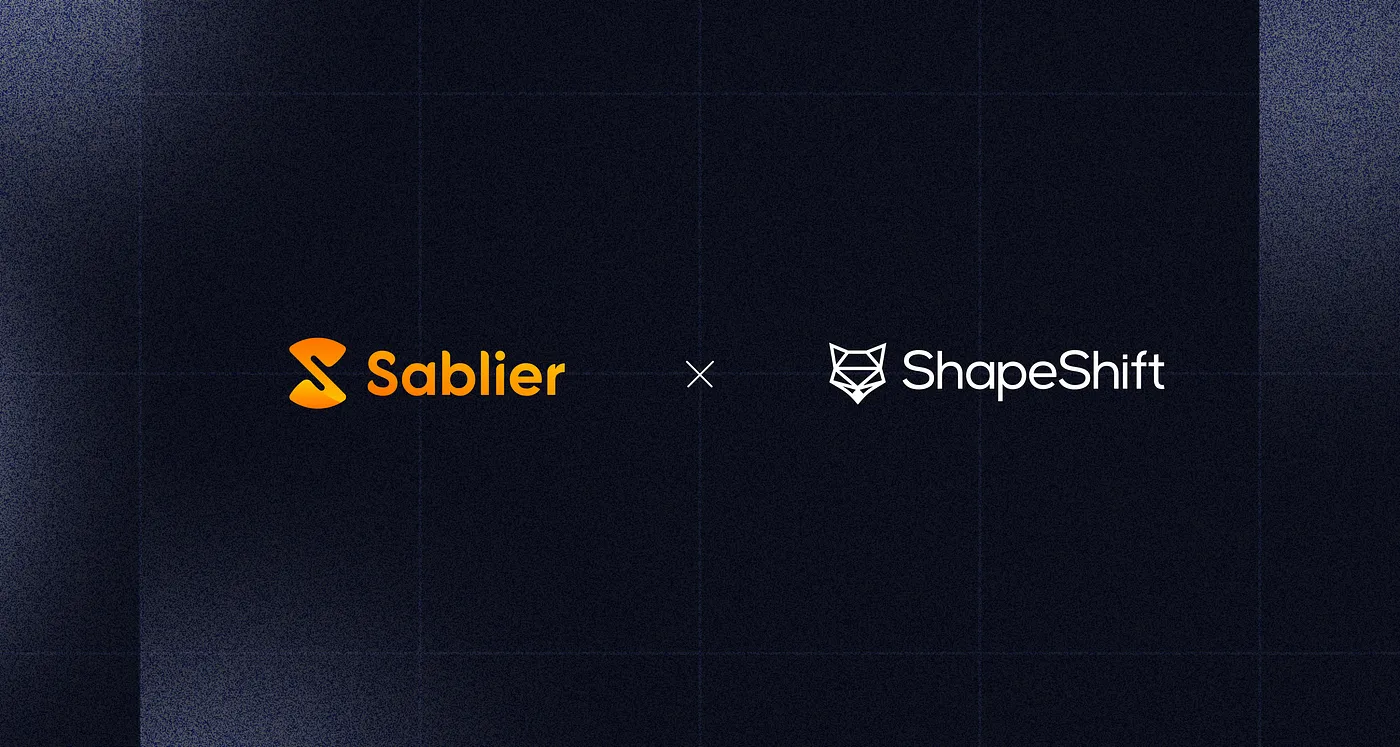How Shapeshift Uses Sablier for Grants
You read it right, the OG crypto platform uses Sablier.

Shapeshift has been around since 2014. It’s a major player in the industry, and the Shapeshift exchange offers a completely private, non-custodial and multi-chain user experience. But Shapeshift is now more than an exchange, it’s a platform where users can trade, track, buy, and earn.
The Challenge
There are a lot of different stakeholders in the Shapeshift ecosystem. Most of these stakeholders need to receive a form of compensation in some way. Employees and shareholders of Shapeshift (the company), receive tokens under a vesting program, for example.
Independent contributors receive grants from the DAO to continue building the ecosystem. The DAO itself needs a continuous source of funding, and some DAO contributors are also rewarded with FOX tokens on a regular basis.
Having to make a different transaction for each of these stakeholders every week/month/quarter would be incredibly time-consuming. But the worst part is that these asynchronous transactions don’t provide the right incentives for DAO contributors to keep the long-term vision of the Shapeshift DAO as their core priority. Additionally, as always with asynchronous transactions, the recipients need to trust that the sender will indeed make the transaction.
The Solution
ShapeShift utilizes the Sablier V1 protocol for a variety of payments, including token vesting programs, grants, and compensation for contributors.
The ShapeShift DAO treasury is endowed with over 300,000,000 FOX Tokens and over $3 m in other Tokens — click here to view the DAO treasury. The DAO is also set to receive approximately 250k FOX per day via its Sablier stream through June 1, 2024 — view it here. Sablier brings full transparency to your DAO compensation program.
Creating a stream can be done in a matter of a few clicks, and streams can have a duration spanning over multiple years. Create the stream and forget about it, the protocol handles everything for you. Your treasury manager will love Sablier.
The Sablier V1 protocol does not have any owner or administrator. They are as trustless as an Ethereum contract can be. On top of that, Sablier has been running on the Ethereum mainnet since 2019 with no hacks, all while reaching a record of $1.5B in TVL with tens of thousands of users all around the world.
Sablier streams allowed the Engineering Workstream at ShapeShift DAO to be able to attract and retain talent using our native $FOX governance token, in an elegant and simple way that creates long term incentives that are aligned between contributors and the DAO, while also being a capital efficient strategy for the DAO treasury — 0xdef1cafe, Engineering Workstream Leader
Because of these reasons (see above paragraph), it’s pretty clear that the Sablier protocol is an ideal fit to handle all types of transactions dealing with tokens for organizations.
Thanks to Sablier, grant recipients have the right incentives. If they don’t deliver, the Shapeshift DAO can simply stop the stream at any time and withdraw the funds which haven’t been streamed yet. On the other hand, grant recipients don’t have to trust the Shapeshift DAO that they will eventually receive their grant. Instead, they receive their grant by the second thanks to Sablier’s battle-tested cryptoasset streaming protocol.
Benefits/Results
Not only do Sablier users win a lot of time by creating streams over a few months, a year, or even multiple years, they can also sit back and relax once the stream is created.
The Shapeshift team and DAO know that the battle-tested Sablier protocol will handle everything for them while they can focus on what really matters: growing their ecosystem.
Shapeshift made the right call to stream tokens with Sablier. Contributors, employees, shareholders and the DAO itself know that they only have to check Sablier in order to quickly access their new token earnings. And all of that, in a truly decentralized, and battle-tested protocol.


